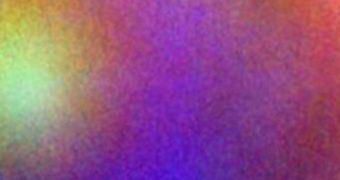Officials with the European Space Agency (ESA) announced recently that their Venus Express probe was able to identify a glory in the atmosphere around Venus, marking the first time such a discovery has been made around another world. Glories are rainbow-like features pretty common here on Earth.
Scientists explain that rainbows and glories are fairly similar to each other. Both occur when liquid droplets in clouds (water molecules in Earth's atmosphere, for example), are illuminated by the Sun at a particular angle. The main difference is that rainbows tend to Arch over the entire sky, whereas glories are more localized and feature concentric rings around a bright core, rather than colored arches.
On our home planet, glories can usually be seen only from airplanes, or from mountain peaks that are covered in mist. On our neighboring world, the Venus Express spacecraft was able to see them because it was located directly in between the Sun and the clouds that reflected sunlight. It is absolutely necessary for the cloud particles to be spherical and of similar sizes for glories to occur.
On Venus, it is entirely likely that these droplets are made up of sulphuric acid, rather than water. ESA scientists have been hunting for such a feature ever since the probe arrived at the planet, because studying such a feature could reveal important data about the chemical makeup of Venusian clouds.

 14 DAY TRIAL //
14 DAY TRIAL //